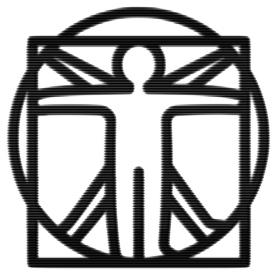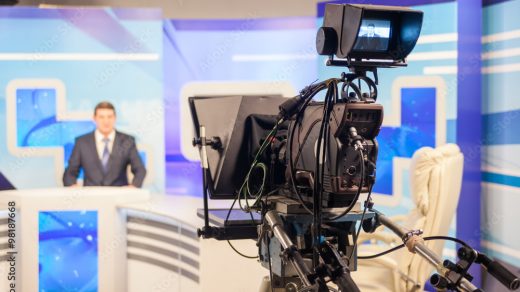As technology continues to advance at a rapid pace, one area that has seen significant growth is the creation of artificial intelligence (AI) art. While some may see this as a threat to traditional artists, the truth is that AI art is simply another form of creativity and expression.
In recent years, AI algorithms have been used to create everything from music and paintings to photographs and sculptures. These algorithms are able to analyze vast amounts of data and generate original works of art based on their findings. This has led to the creation of some truly stunning and unique pieces of art.
One advantage of AI art is that it can be created quickly and easily. Unlike traditional artists, who may spend weeks or even months on a single piece, AI algorithms can generate art in a matter of seconds. This means that AI art can be created on a much larger scale, allowing for more diversity and experimentation in the field.
Another advantage of AI art is that it can be created by anyone, regardless of their artistic ability. All that is required is access to the appropriate algorithms and data sets. This has the potential to democratize the world of art, making it more accessible to a wider audience.
Of course, some may argue that AI art lacks the emotional depth and human touch of traditional art. But this is a narrow view that fails to recognize the potential of AI algorithms to generate truly original and thought-provoking works. In fact, many AI-generated pieces have been praised for their creativity and uniqueness.
It is important to recognize that AI art is not meant to replace traditional art, but rather to complement it. Both forms of art have their own unique strengths and weaknesses, and both have the potential to inspire and engage audiences in different ways.
In conclusion, the rise of AI art should not be seen as a threat to traditional artists, but rather as an exciting new development in the world of art. It offers the potential for faster, more diverse, and more accessible art, and has the potential to inspire and engage audiences in new and exciting ways.
As a final note, however, it is worth mentioning that this entire blog post up until now was written by an increasingly popular AI assistant – chatGTP (link at the bottom). Thus, it might be interesting to consider how AI might be incorporated into the future works of the people and how instead of fighting against it, people could work with it to enhance their own capabilities. Thus, perhaps it’s time to recognize AI creations as human creations as well, particularly given the fact that certain works created by AI require just as much human input as anything else. Like this post, for example – I could have written it myself, but it would have taken me much longer and wouldn’t have showcased the efficiency of AI. However, it is still my creation, given the fact that I was the one who came up with the prompt and decided to use it 🙂
All in all, whether you’re pro or anti-AI generated content, I’d highly advise giving it a go – perhaps not to create art, but to explore the possibilities of AI!




It’s refreshing to see someone taking the AI’s side in this debate, as I feel like most are quickly dismissing this incredibly interesting technology without a second thought. However, while I agree that these AI should be explored further, and to that end used more, I do feel like there need to be some regulations set in place before things get to wild. I’ve recently heard of some artists who have their art being taken without consent to train AI. This in and of itself sparks an interesting discussion about whether or not all images on the internet should be free to use, but for the time being some regulations for AI art generators would be nice. Ideally, these regulations wouldn’t be restrictive, rather they would guide these systems and there creators on a fairer path.
I can’t take a side yet in the debate, but a few things strike me. Even though in an isolated environment, there is something very unsettling about the idea of a machine knowing so much. Right now, this AI assistant can write an article, which is mesmerising. It can make the plan for your next assignment, provide you with points for a paper you did not think of and draft for you on the subject. I wonder what implications this will have in education in a few years, bad next to good ones. And I don’t think we can compare to the calculator or the photo, this goes way beyond.
> it is worth mentioning that this entire blog post up until now was written by an increasingly popular AI assistant – chatGTP
Hah, I suspected as much. chatGPT has a very specific style for these kinds of prompts (I’ve also been experimenting with using it to produce course contents 😉). It’s very good at writing simple five paragraph essays.
The capabilities to do this are already here, so perhaps this is also the time to change our educational system to get away from the simple regurgitating of content, to something where we learn in more interactive ways. Some educational organizations are already incorporating AI in their teaching and grading [1].
Additionally, the prose of GPT is, to say it mildly, plain and boring. Professional writers are much more capable of writing engaging and stylistically pleasant content. There’s a certain feeling to it that you can recognize easily. For example, here’s an article on this topic [2] that makes use of the same idea of starting an article with chatGPT generated content, that shows just how bad its prose is when compared to a professional writer.
[1] https://fd.nl/samenleving/1461748/artificial-intelligence-maakt-ons-onderwijs-achterhaald
[2] https://www.theatlantic.com/technology/archive/2022/12/chatgpt-openai-artificial-intelligence-writing-ethics/672386/